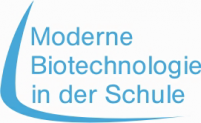For the fourth meeting in the two year-long project „European Challenges in Gene Editing by
CRISPR“, the Erasmus+ team met at Vilniaus Jezuitu Gimnazia in Vilnius to the execution of
a lab-workshop with pioneer character. For the first time on international level did students
perform DNA-sequencing in a lab using a Third Generation method developed by Oxford
Nanopore. The students and their teachers from France, Denmark, Germany, Greece, Poland,
Slovakia and Czech Republic were warmly welcomed by the Lithuanian hosts. We were
especially happy about the participation of the American delegation, consisting of students of
the Governor’s School for Science and Mathematics, our longtime partner school from
Hartsville (South Carolina).

From 27.09.2023 – 06.10.2023 the, in May 2023 in Istanbul developed, education unit on the
topic of DNA-sequencing of a CRISPR/Cas9 cut in a plasmid was evaluated. Besides the
practical execution of the experiment, education material was presented and thus put to the
test.

The laboratory internship was instructed by an international mentor team, consisting of
students from Poland, Denmark and Lithuania. During the first step of the multiple day-long
lab internship the CRISPR guide RNA (gRNA), which is specifically programmable and leads
the Endonuclease Cas9 to a specific target in the genome, was synthesized by all workgroups
by the method of in-vitro transcription. The successful synthesis of the gRNA was verified by
means of gel-electrophoresis. Thereon the workgroups brought the Endonuclease Cas9
together with the gRNA and thus formed the active CRISPR/Cas9-complex, the so-called
gene scissor. Again, by gel-electrophoresis, the successful cut of the complex into the circular
DNA of the plasmid pBR322 (4361 bp) and its following linearization was verified. Finally
by the sequencing method we evaluated whether the cut was actually specifically or rather
randomly made.

As the highlight of the workshop the linearized plasmid was sequenced via Oxford Nanopore
technology, a Third Generation sequencing method. Supported by the sequencing results the
precise cut of the Endonuclease CRISPR/Cas9 could be exactly proven by all of the 22
international workgroups. The laboratory internship was supported by the globally operating
biotechnology company Thermo Fisher Scientific, which provided us the necessary lab tools
and chemicals. Moreover, we were invited to the company to visit their research facilities.

Furthermore, a visit to Vilnius University was scheduled. The Erasmus+ team was invited by
the renowned Lithuanian scientist Prof. Virginijus Šikšnys,a pioneer on the field of gene-editing by the means of CRISPR/Cas9. After his exciting Lecture he took extensive time to answer questions from students and teachers. The meeting was rounded off by the visit of the medieval Castle in Trakai, erected in the 15 th Century, and a wonderful final dinner at which
we could reflect thr impressive experiences of this workshop. At the end of the meeting all participants were on the same page that the shared development of educational material on CRISPR/Cas9 and sequencing were enabled thanks to the funding of the European Union and the pioneer work was to the benefit of all the international students. The complete educational material and more about the lab workshop in Vilnius are available on: http://www.geneeditingbycrispr.com for all interested schools to download.
